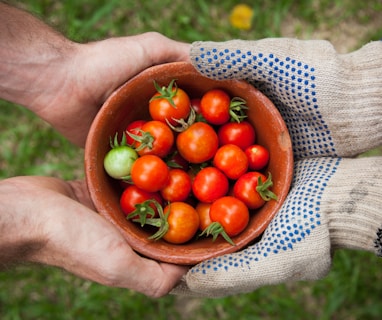Creating a homestead
The article outlines the essential steps to take when creating a homestead. It emphasizes the importance of location selection, planning, building infrastructure, planting crops, raising livestock, and maintaining the homestead. The article provides tips and considerations for each step and stresses the importance of safety, sustainability, and consistency when creating and maintaining a homestead. Overall, the article encourages readers to reconnect with the earth and embrace a self-sufficient lifestyle through homesteading.
BCRP
4/15/20232 min read


Creating a homestead is a fulfilling and rewarding endeavor that allows you to reconnect with the earth and become more self-sufficient. Whether you are looking to grow your own food, raise livestock, or simply live a more sustainable lifestyle, a homestead can provide you with the tools and resources to do so. In this article, we will outline some essential steps to take when creating your own homestead.
Location, Location, Location
The first step in creating a homestead is finding the perfect location. Ideally, you want a piece of land that is large enough to accommodate your needs but also close enough to town to make shopping for supplies and necessities feasible. When selecting a location, consider factors such as soil quality, water availability, climate, and zoning laws. You may also want to consider factors such as access to healthcare, schools, and other essential services.
Plan Your Homestead
Before you begin building and planting, it is important to plan out your homestead. This should include determining what crops you want to grow, which livestock you want to raise, and how you plan to manage waste and compost. You should also think about how you will generate electricity, heat your home, and maintain the property.
Build Your Infrastructure
Once you have a plan in place, it is time to start building your infrastructure. This may include building a home, barns, and outbuildings, installing fences, digging wells, and creating irrigation systems. It is important to prioritize safety when building any structure on your property, so make sure to hire licensed professionals or research local building codes before starting any construction.
Plant Your Crops
With your infrastructure in place, it is time to start planting your crops. Start by testing your soil and adding any necessary amendments to improve its quality. You may also want to consider companion planting, crop rotation, and other sustainable farming practices to maximize your yields and protect your soil.
Raise Your Livestock
In addition to crops, many homesteaders also raise their own livestock. Whether you are raising chickens, goats, cows, or pigs, it is important to provide them with proper shelter, food, and water. Make sure to research local laws and regulations before bringing any animals onto your property, and consider investing in proper fencing to keep your livestock safe from predators.
Maintain Your Homestead
Maintaining a homestead is an ongoing process that requires consistent attention and care. This may include tasks such as weeding, pruning, harvesting, and animal care. It is important to stay organized and keep track of your tasks to ensure that nothing is overlooked or forgotten.
In conclusion, creating a homestead is a rewarding and fulfilling endeavor that requires planning, hard work, and dedication. By following these essential steps, you can create a self-sufficient lifestyle that allows you to connect with the earth and live a more sustainable life.
